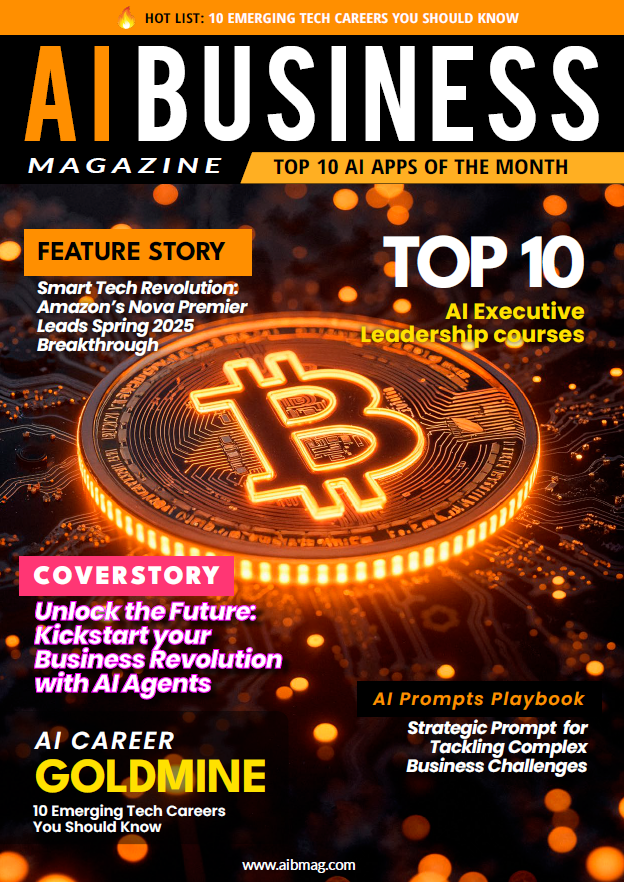A New Chapter in AI Careers
A transformative wave is unfolding across classrooms worldwide, as seasoned AI professionals—engineers, researchers, data scientists, step away from industry to embrace education. This migration marks a turning point in how society learns and engages with AI. Rather than just building systems, these experts are now nurturing the very human capacities—curiosity, reasoning, ethical judgment—that underpin effective technological progress.
The shift holds significant meaning in today’s AI‑immersed world. We often speak of widespread algorithmic deployments and automated decision systems, but fewer voices highlight the people educating individuals on using them responsibly. Bringing in instructors who have both technical depth and applied experience enriches educational ecosystems. These professionals bridge abstract theory with real-world application and offer students rare access to practice‑driven insights that textbooks typically omit.
Publications like AI Business Magazine have increasingly spotlighted this trend, recognizing the vital role of education in building a workforce capable of navigating and deploying the top AI platforms of tomorrow.
Why AI Professionals Are Choosing the Classroom
Seeking Purpose and Impact
Many AI practitioners arrive at a crossroads after years spent deploying models or optimizing algorithms. While these endeavors contribute to business value, the sense of teaching often fulfills deeper aspirations—of community, legacy, and shaping future minds. For some, the desire is simple: to move from working on AI tools to enabling others to wield them well.
Others answer practical needs. Businesses and academic institutions are actively recruiting ex‑engineers for roles in teaching AI, with schools in India hiring engineering graduates to lead STEM and coding initiatives in K–12 environments.
Universities also value instructors grounded in industry to steward lab classes and applied courses.
For both newcomers and career‑switching professionals, classrooms offer a platform to combine deep expertise with mentorship, turning knowledge into transformation.
It’s not just about building the most used AI tools anymore—it’s about equipping others to use them with nuance, care, and vision.
From Systems Developer to Systems Educator
The parallels between designing AI systems and orchestrating educational experiences are stronger than they first appear. Both fields require anticipating user needs, iterating through feedback, balancing scalability with customization, and emphasizing ethical guardrails. A former AI architect who understands data pipelines can help students design fair and accountable systems. A senior ML researcher experienced bottleneck optimization can guide learners in debugging real‑world model inefficiencies.
This alignment gives rise to instructors who think like product designers—each lesson is a feature release, refined with student feedback.
The day-to-day fluency in latest frameworks and services means students are prepared for systems beyond the classroom when they graduate.
Reinventing the Teaching Playbook
Shifting Pedagogy with Practice
AI educators are reengineering instruction around active, iterative learning. Gone are the days of dense lectures peppered with occasional coding demos. Instead, classes are built on live experimentation: students write code, test edge cases, debug pipelines, and iterate models with real datasets.
Learning cycles follow U‑shaped arcs: hypothesis, implementation, analysis, refinement. Such hands‑on loops mirror what students will face in real startup or enterprise environments. Instructors mentor these iterations, pushing learners to reflect on assumptions and challenge model outputs.
Many instructors use interactive notebooks embedded with explanatory commentary, inline visualizations, and cell‑level exercises. These tools—Jupyter and Google Colab—create living documents where code and narrative converge. Students experience learning as exploration, not recitation.

Leveraging AI Tools in Teaching Design
Drawing from their backgrounds, AI professionals tailor their teaching style and tools:
- Platform-integrated simulators: Tools like PhET’s science simulations enable visual experimentation with variables in physics and biology .
- Visualization frameworks: Customized dashboards that show how gradients change during backpropagation or how decision boundaries shift as models train.
- AI-driven tutoring and feedback: Educators use platforms such as Andrew Ng’s Kira Learning to handle grading and scaffold student answers with Socratic prompts.
- Generative course creation: Solutions like TeacherMatic help craft lesson outlines, assessments, parent‑teacher communications, and rubrics at scale.
These tools free instructors from repetitive tasks, letting them focus on exploration, mentorship, and real value-add—particularly in areas like conceptual reasoning and ethical judgment.
Building Industry‑Relevant Curricula
Bridging Theory and Practice
Veteran AI professionals craft curricula not around abstract theorems, but around real-world applications: conversational agents that solve customer problems, autonomous visual‑recognition systems, reinforcement‑learning bots, or AI ethics audits. Theory (graphs, loss functions, architecture) supports these core applications.
This alignment ensures that theoretical foundations are not disconnected from outcomes. Students learn not just “how” a transformer works—but also why a transformer might fail in sentiment classification or when fine-tuning is necessary in noisy settings.
Embedding Responsibility and Ethics
Practitioners know that AI in the wild sometimes fails in profound ways—from biased hiring systems to opaque credit‑scoring models. This informs their teaching. Ethical modules are not add-ons; they are embedded in every project. Students practice techniques like data auditing, adversarial testing, fairness metrics, and explainable AI. They are trained to interrogate outcomes and societal impact, not just model accuracy.
Impact Across the Learning Landscape
Early Introduction in K–12
Some regions are piloting STEM curricula infused with AI concepts early in schooling. Classrooms engage young students in coding related to image recognition or chatbot design. In Mangaluru, India, schools are hiring engineering graduates to teach AI and robotics to children from first grade upward. These programs spark interest and demystify AI for students who might otherwise view it as inaccessible.
University and Post‑Graduate Programs
AI instructors are increasingly present in capstone labs, data ethic seminars, and industry-linked projects. Universities are partnering with tech companies to supply real-world datasets. Programs like Rotman’s “All Day TA”—an AI assistant that addresses student questions across course materials—demonstrate how tools originally conceived for teaching are co-created with universities and business schools.
Corporate Training and Upskilling
Ex‑industry professionals also lead professional bootcamps and in-house training. Here, lessons focus sharply on applied skills: deploying models in production, infrastructure scaling, MLOps integration. Training is built around collaborative case studies—across Slack, Git, and cloud platforms—to mirror workplace workflows.
Community Outreach and Public Literacy
The most grassroots instructors run free weekend workshops, civic hackathons, library courses, or non‑profit micro-credential talks. They demystify AI through analogies, storytelling, and clear guided exercises, bridging the digital literacy gap. This works toward equitable access to AI capability across demographics.
Collaborating Across Sectors
Sustaining Industry Ties
AI educators stay closely connected to their former fields. Many contribute to open-source projects, submit issues, review docker containers, or host guest clinics where students solve real technical problems collected from industry partners. Others coordinate internships, shadow days, or live product demos to connect classrooms to market scale.
Embedding Mentorship and Experience
Some adopt co-teaching models: pairing active practitioners with academic professors. This dynamic blends research rigor with commercial insight. Instructors host office hours alongside hiring managers, discuss tech stacks used in industry, or decode common scaling bottlenecks in real-time. Students graduate ready to speak the language of both code and stakeholders.
Research-Industry Feedback Loops
High-impact educators collaborate on joint research initiatives—exploring pedagogical impact of new AI platforms, curriculum efficacy, or adaptive learning outcomes. Projects like Stanford’s AI+Education Summit have surfaced recommendations on how platforms and content should evolve to support instructor adoption (hai.stanford.edu).
Overcoming Teaching Challenges
Communicating Complex Concepts
Translating abstract math and deep model behavior to diverse learners requires intentional scaffolding. Effective instructors break down ideas with metaphors, visual analytics, or simplified analogies—“backprop is like finding shortest path through a city grid”—to build intuitive understanding before formalization.
Keeping Up with Rapid Change
AI evolves rapidly. Instructors stay current via “learning squads,” weekly reading groups, short‑format blog posts, or continuous professional development webinars such as edWeb’s recent module on “From Resistance to Transformation”. Many curate light-touch modules adaptable semester to semester.
Fostering Inclusion and Equity
If AI education should not be a luxury, educators use measures like open-source tools, cloud service credits, offline setup scripts, and flexible deadlines. They partner with community centers and provide hybrid cohorts to reach working adults and underrepresented groups.
The Strategic Role of AI Teaching Tools
Personalized AI Tutors
Innovative platforms like Khanmigo—built by Khan Academy atop GPT‑4—offer tutoring in math, science, writing, and AI reasoning. They provide scaffolded hints, feedback to educators, and dual modes for teachers and learners.
Adaptive Learning Engines
Companies like Squirrel AI tailor lesson sequences and pacing around individual learner profiles—breaking concepts into knowledge graphs and refining estimates across diagnostic loops. Their insights help educators refine curricula design and intervention strategies.
Simulation Environments
Tools such as AnyLogic enable reinforcement‑learning agent design in virtual worlds—supporting AI coursework where students prototype control policies inside traffic‑ or logistics‑simulation environments. Immersive platforms like Virti use VR/AR and AI to mimic professional scenarios where students can practice high‑stakes dialogues or medical tech tasks.
Auto-Generative Course Design
TeacherMatic and similar systems automate rubrics, lesson flows, quizzes, and student communications. These reduce administrative overhead while preserving instructor creativity.

Looking Ahead: The Future of AI as Pedagogy
A Seamless Talent Pipeline
As AI instructors gain foothold in early education, graduate programs, and corporate training, we can expect educational design to become more modular, continuous, and competency‑based. Learners might begin AI literacy at age nine, progress through capstone production projects in university, and reskill mid-career—all guided by practitioners-turned-educators.
This layered system could close the AI talent gap and promote lifelong learning. The shortage of field-ready AI experts would be mitigated, not by theory-heavy graduates, but by those grounded in practical skills and ethical transparency.
Evolving Teaching Roles
Instructors won’t remain static. The next generation of AI educators will move fluidly between industry consulting, curriculum design, public policy, and nonprofit engagement. Careers may blend academic affiliation with contract coding, platform moderation, or educational startup leadership.
Multi‑role platforms—where a single professional teaches, builds intelligent education tools, mentors startups, and advises on policy—will become the norm.
AI as Pedagogical Partner
Rather than replacing teachers, AI will become an embedded collaborator. Research shows that teaching augmented by AI—like voice agents supporting classroom Q&A—enhances rather than displaces humans.
As pedagogical agents become more capable at assessment, feedback, and scaffolding, human educators will focus on what humans do best: motivating, contextualizing, and guiding moral reasoning.
Systemic Transformation
The long-term effects are profound. Education systems will shift toward competence-based, real-world learning systems. Curricula will be organized by project outcomes (e.g., deploy a translation model) rather than siloed theory modules. Assessment will emphasize portfolios and impact rather than test scores.
AI instructors are key drivers in this evolution, capable of designing the engines of active learning and modeling how to learn when frameworks shift.
A Call to Action
For industry professionals reading this, the path from AI development to AI instruction offers more than career change—it offers legacy. Choose a classroom, online cohort, or public interface. Bring your stories, your infrastructure knowledge—your scars from project failure—and teach others not just to follow but to think and act ethically.
For institutions, hire and support applied practitioners—help them marry teaching skills with technical depth. Provide setups, release time, peer networks.
For policymakers, fund programs enabling flexible instructor careers that straddle capstone partnerships and freelancer‑consultancy cycles.
In Conclusion
AI professionals stepping into educational roles represent a strategic shift in how society learns, develops, and innovates. They fuse technical competence, practical storytelling, mentorship, and moral clarity to craft learning pathways suited to an AI-augmented future. This wave of instruction won’t just fill job vacancies—it will nurture leaders, thinkers, and practitioners who design AI systems to support humanity, not replace it.
What begins in a K‑12 coding lab or a graduate AI studio ends in healthier talent pipelines, stronger communities, and more trustworthy technology. In the interplay of code and classroom, we may find the blueprint for a future where AI powers progress, and the next generation learns to steer it.






